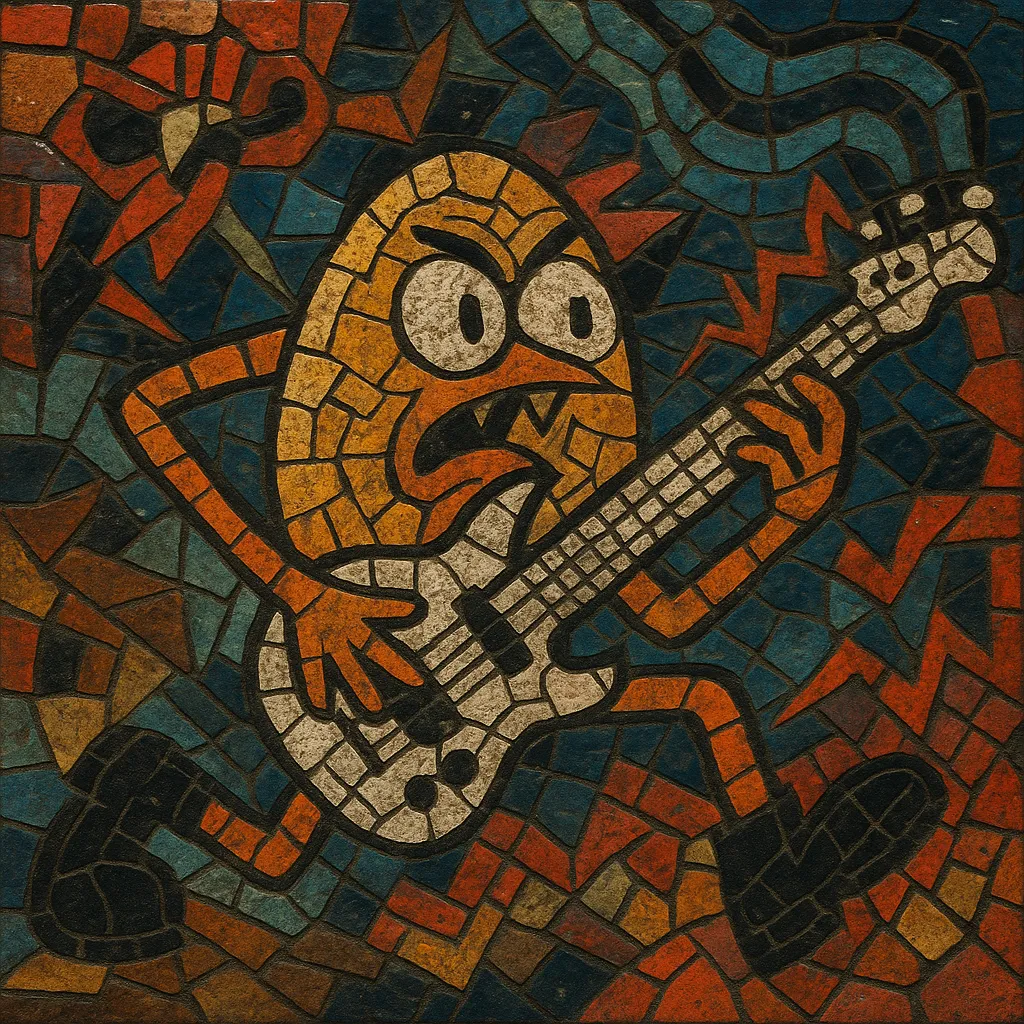Egg punk is a lo‑fi, synth‑laced, jittery offshoot of punk that embraces awkwardness, absurdist humor, and devolved futurism. It tends to favor short, tightly wound songs driven by springy bass, trebly guitars, cheap drum machines, and buzzing monosynths, with nasal or deadpan vocals.
The sound references first‑wave new wave and Devo‑style art punk as much as it does budget garage punk, swapping macho toughness for geeky, rubbery energy. Releases are typically DIY—4‑track or cassette‑recorded—and circulate through small labels, Bandcamp, and tape trades.
Egg punk emerged in the mid‑2010s within the U.S. DIY underground (notably the North‑West Indiana/Midwest and Minneapolis scenes) and parallel Australian micro‑scenes. The tag arose online as a tongue‑in‑cheek counterpart to “chain punk” (a meme shorthand for grittier, d‑beat‑leaning hardcore). Where chain punk prized raw toughness, egg punk leaned into angular synths, spazzy rhythms, and nerdy, Devo‑coded aesthetics.
Artists fused garage‑punk urgency with post‑punk/new‑wave economy: staccato guitar, spring‑loaded basslines, plastic drum machines, bleepy monosynths, and cartoonish, often satirical vocals. The style celebrated cheap gear and lo‑fi recording, favoring xeroxed artwork and egg/food/office‑tech visual gags to underline its anti‑serious posture.
Small labels such as Total Punk, Neck Chop Records, Lumpy Records, Erste Theke Tonträger, and Anti Fade helped codify the sound via 7"s, cassettes, and fast‑selling limited LPs. Bandcamp and message boards accelerated global reach, connecting U.S. and Australian scenes and spawning a steady trickle of micro‑releases from 2014 onward.
By the late 2010s and early 2020s, egg punk had become a recognizable shorthand in zines, Discogs tags, and show flyers. Its nervy synth‑punk template and irreverent attitude fed into indie‑punk and post‑punk revivals, and normalized drum‑machine/synth integration in contemporary DIY punk.


